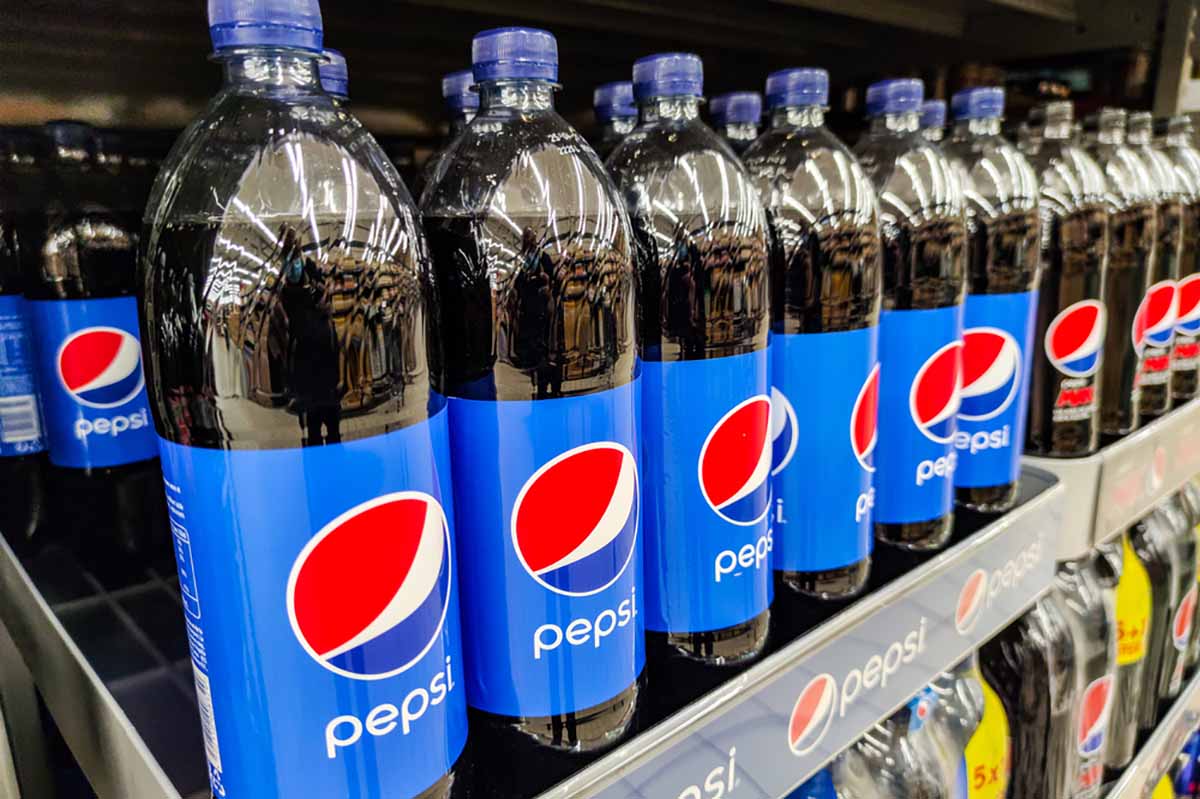
PepsiCo recently announced it will fall short of its 2025 goal to make 100% of its plastic packaging recoverable or reusable.| Pixinoo/Shutterstock
In recent weeks and months, disclosures by consumer goods giant PepsiCo and resin producer Shell have indicated the companies will either miss targets or adjust timelines to meet plastics recycling-related goals. Meanwhile, Nestle has received media scrutiny for changing how it describes its goals, even as it continues to make progress toward those targets.
The revelations join a growing chorus of major brand owners and other plastics industry stakeholders who have forecast that they are likely to miss some of the pledges they made for 2025.
PepsiCo projects it will be ‘short of our 100% goal’
PepsiCo will fall short of its 2025 goal to make 100% of its plastic packaging recoverable or reusable, citing a number of challenges it has yet to fully overcome. Packaging Europe first noted the shift.
In its latest sustainability report covering 2023, PepsiCo reported that achieving its packaging goals presents “a unique set of challenges,” and that those challenges mean the company will miss its 2025 design goal slightly.
By next year, the company estimates 98% of its plastic packaging will be recyclable, compostable, biodegradable or reusable, up from 89% in 2023. Beyond design for theoretical recovery, PepsiCo anticipates 92% of its packaging will be recyclable, compostable, biodegradable or reusable “based on availability of end of life solutions,” a metric that takes into account real-world conditions.
Despite those high percentages, the company’s target is to make 100% of its plastic packaging recyclable, compostable, biodegradable or reusable by 2025.
“This current projection has us short of our 100% goal, but we continue with our ambition to innovate, invest and partner to progress further,” the company stated on the packaging section of its website. “We will continue to engage externally and across industries to collaborate on the essential shifts needed to support this transformation.”
The challenges PepsiCo cited in meeting its recycling goals include: “Business growth in certain markets, particularly in markets that do not allow, or have only recently allowed, rPET in food grade packaging,” as well as inadequate recycling infrastructure, low recycling rates, limited supply of high-quality post-consumer resin, and consumer comfort with single-use products, which makes it harder to transition to refill and reuse models.
PepsiCo’s latest report also indicates the company used 10% PCR in its plastic packaging in 2023, up from 7% in 2022 and 6% in 2021. It has a goal to use 50% PCR by 2030. Still, its virgin plastic use has increased overall in recent years, despite the company pledging in 2021 to reduce virgin plastic use by 20% by 2030. The latest report indicates PepsiCo’s virgin resin use has increased by 6% since then.
Shell extends timeline for chemical recycling results
Like many major oil and virgin resin companies, Shell has bet big on chemical recycling. The company has made pyrolysis, one type of chemical recycling, a key component of its plastics waste reduction strategy. But its pyrolysis goals have not panned out on the timeline the company hoped.
In 2019, Shell announced an “ambition” to use 1 million metric tons of end-of-life plastics as feedstock in its chemical plants by 2025. The company explained it would do this by “producing chemicals using a liquid feedstock made from plastic waste. The technique, known as pyrolysis, turns hard-to-recycle plastic waste into chemicals that are used to make new plastics.”
In 2020, the company signed an agreement with Nexus Fuels to process scrap plastic using pyrolysis at Shell’s Norco facility in Louisiana. Shell called it an “an important step towards achieving our ambition” to hit the 1 million metric tons figure.
But by 2022, the company announced in its sustainability report that “due to market factors, such as lack of available feedstock and progress in technology development, Shell’s ability to profitably meet its 1 million [metric ton] plastic waste ambition by 2025 is unfeasible.”
Its latest report, released this year, included a similar statement: “While Shell sees customer demand for circular chemicals, the pace of growth globally is less than expected due to lack of available feedstock, slow technology development and regulatory uncertainty,” the company said, reiterating that its 1 million metric tons goal remains “unfeasible.”
The Guardian first reported the statement in the latest report.
Wording change draws media attention
Meanwhile, Nestle has faced public scrutiny in recent weeks for the decision to modify its recycling-related goals back in 2022. Bloomberg reported on the shift on July 10.
The scrutiny focused on Nestle’s shift from its 2021 sustainability report, where it committed to use 100% recyclable or reusable packaging by 2025, to its 2022 sustainability report, where it instead committed that it would aim to use 95% plastic packaging that is designed for recycling by 2025, and to continue working toward 100% reusable or recyclable.
Bloomberg alleged that wording change meant Nestle’s packaging would generate 280,000 metric tons per year of non-recyclable waste that would otherwise have been eliminated.
Despite the target wording shift, Nestle’s latest sustainability report, released early this year and covering 2023, is still making incremental progress toward the recyclability and reusability goal. The share of packaging that is recyclable or reusable increased to 86.6% in 2023, up from 85.8% in 2022 and 85.4% in 2021.
As for the company’s modified target for packaging design for recycling, Nestle reported 83.5% of its packaging met that criteria in 2023, up from 81.9% in 2022 and 74.9% in 2021.
Crucially for the reclamation sector, Nestle has reported significant increases in recycled content inclusion in its plastic packaging over the last four years. The company hit 9.3% recycled plastic use in 2023, up from 7.7% in 2022, 4.3% in 2021 and 1.7% in 2020.